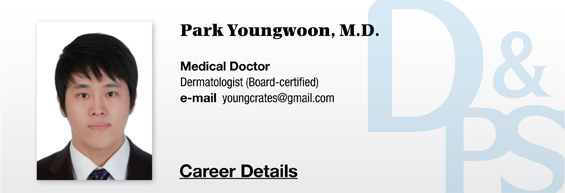Tranexamic acid (trans-4-amino-methylcyclohexanecarboxylic acid, TA) has been used for treatment of hyperpigmented lesions including melasma.26,27 TA is an anti-fibrinolytic agent that inhibits the plasmin/plasminogen system. In addition to its anti-fibrinolytic effect, it is also known to have anti-allergic and anti-inflammatory effects which are presumed to inhibit melanogenesis.27
It is also thought to inhibit interactions between melanocytes and keratinocytes, thereby bringing lightening effects. However, the mechanism by which TA reduces melanin is not yet clearly understood.28 TA is used in various formulations including topical creams, localized microinjections and oral agents for the treatment of hyperpigmentation.
TA can be used alone in melasma and is known to be a safe and effective treatment.26,29 Due to low efficacy and poor patient compliance, however, TA is commonly used in combination with Laser toning and other modalities. The combination of TA and Laser toning has a wealth of clinical experience with many studies reporting its efficacy and safety.30,31
Unlike other combinations, the two components can be used simultaneously without an increase in the risk of complications. Recent studies have reported that TA can decrease Laser-induced melanogenesis.28 Since a long time ago, TA was combined with Lasers to increase its skin permeation.32 Thanks to recent development of transepidermal drug delivery, TA is expected to be more effectively used in treatment of melasma.
Besides non-Laser modalities, Laser therapies are also being combined to Laser toning to obtain better results than those of Laser toning alone. Many clinical dermatologists including ourselves have been combining Laser toning with other melasma therapies and there has been a great deal of clinical experience on combination treatment.
Research on combination therapy is increasing in the recent years as Laser toning is considered a mainstay of treatment in melasma. Clinical data on the safety and efficacy of Laser toning has increased and recent Laser toning method uses a lower fluence, milder tissue response and fewer passes compared to the old days. These allow other therapeutic modalities for melasma to be combined with Laser toning for better efficacy.
2. Fractional Laser Toning
Applying more aggressive Laser toning in melasma patients with poor response may bring immediate improvement, however, the long-term disadvantages outweigh the immediate benefits. On the other hand, with fractional Laser toning, increasing the fluence can have a different impact. Because tissues damaged from irradiation are surrounded by non-irradiated healthy tissues, it is expected to reduce skin irritation and promote healing. It means fractional Laser toning may have a lower risk of complications.
We used the 1,064 nm fractional Laser toning mode with 50% coverage and kept the fluence about twice as high as a regular Laser toning mode. As the fractional mode settings and parameters differ depending on the manufacturer, it is important to exquisitely adjust the parameters for each patient and lesion site.
As fractional Laser toning uses a higher fluence, it is expected to bring better results in non-responders. Moreover, when hypopigmented macules occur, hypopigmented lesions can be less visible by virtue of the small beam size. Scattered, fine spots of hypopigmentation may create an overall whitened look rather than ungainly depigmented macules.
[Advertisement] FCR® (Fractional Prickle CoralCalcium Regentron) – Manufacturer: (www.illglobal.com)]
3. Intense Pulsed Light(IPL)
IPL was one of the most commonly used treatment of melasma before the introduction of Laser toning. In the early 2000s, studies started reporting therapeutic efficacy of IPL in melasma,33 and others followed suit, reporting favorable results of IPL.34,35
A review published in 2006 also provided a favorable evaluation of IPL in melasma.3 However, in clinical practice, patients without visible melasma lesions often developed melasma-like hyperpigmentation after receiving IPL treatment for photorejuvenation or lightening of solar lentigines and freckles.
-To be continued
References
25. Usuki A, Ohashi A, Sato H, Ochiai Y, Ichihashi M, Funasaka Y. The inhibitory effect of glycolic acid and lactic acid on melanin synthesis in melanoma cells. Exp Dermatol 2003;12 Suppl 2:43-50.
26. Lee JH, Park JG, Lim SH, Kim JY, Ahn KY, Kim MY, et al. Localized intradermal microinjection of tranexamic acid for treatment of melasma in Asian patients: a preliminary clinical trial. Dermatol Surg 2006;32:626-31.
27. Maeda K, Naganuma M. Topical trans-4-aminomethylcyclohexanecarboxylic acid prevents ultraviolet radiation-induced pigmentation. J Photochem Photobiol B 1998;47:136-41.
28. Kim MS, Bang SH, Kim JH, Shin HJ, Choi JH, Chang SE. Tranexamic Acid Diminishes Laser-Induced Melanogenesis. Ann Dermatol 2015;27:250-6.
29. Na JI, Choi SY, Yang SH, Choi HR, Kang HY, Park KC. Effect of tranexamic acid on melasma: a clinical trial with histological evaluation. J Eur Acad Dermatol Venereol 2013;27:1035-9.
30. Cho HH, Choi M, Cho S, Lee JH. Role of oral tranexamic acid in melasma patients treated with IPL and low fluence QS Nd:YAG Laser. J Dermatolog Treat 2013;24:292-6.
31. Shin JU, Park J, Oh SH, Lee JH. Oral tranexamic acid enhances the efficacy of low-fluence 1064-nm quality-switched neodymium-doped yttrium aluminum garnet Laser treatment for melasma in Koreans: a randomized, prospective trial. Dermatol Surg 2013;39:435-42.
32. Hsiao CY, Sung HC, Hu S, Huang CH. Fractional CO2 Laser treatment to enhance skin permeation of tranexamic acid with minimal skin disruption. Dermatology 2015;230:269-75.






















